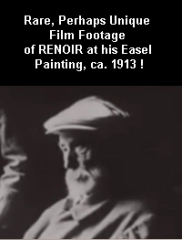(Denver, Colo.) – Becoming Van Gogh, an in-depth exploration of Vincent van Gogh’s unconventional path to becoming one of the world’s most recognizable artists, will be on view at the Denver Art Museum (DAM) from October 21, 2012, through January 20, 2013. The exhibition examines critical steps in the largely self-taught artist’s evolution through more than 70 paintings and drawings by Van Gogh, along with works by artists he responded to. Organized by the DAM and curated by Timothy J. Standring, Gates Foundation Curator of Painting and Sculpture at the DAM and Louis van Tilborgh, Senior Researcher of Paintings at Amsterdam’s Van Gogh Museum, Becoming Van Gogh brings together
loans from more than 60 public and private collections from across Europe and North America to tell the story of a number of key formative periods throughout the artist’s career.

Vincent van Gogh, “Self-Portrait with Straw Hat,” 1887
Oil on canvas
Van Gogh Museum Amsterdam (Vincent van Gogh Foundation).

Vincent van Gogh, “A Pair of Boots,” 1887
Oil on canvas
The Baltimore Museum of Art: The Cone Collection, formed by Dr. Claribel Cone and Miss Etta Cone of Baltimore, Maryland
“This is a unique opportunity for our audience to discover how Van Gogh arrived at his iconic style and gain new insights into his influences,” said Christoph Heinrich, Frederick and Jan Mayer Director of the DAM. “We are thrilled to bring together an exhibition that will give visitors new insight into one of the world’s greatest artists.”

Vincent van Gogh, “Postman Joseph Roulin,” 1888
Oil on canvas
Museum of Fine Arts, Boston, Gift of Robert Treat Paine
Photograph © 2012 Museum of Fine Arts, Boston.
By focusing on the various stages of Van Gogh’s artistic development, Becoming Van Gogh illustrates the artist’s initial foray into mastering draftsmanship, understanding the limitations and challenges of materials and techniques, learning to incorporate color theory and folding a myriad of influences, including other artists, into his artistic vocabulary. No other exhibition has focused so intensely on Van Gogh’s personal growth and progression in his journey toward his own personal style.

Vincent Van Gogh, “Grass and Butterflies,” 1887
Oil on canvas
Private collection, image courtesy Van Gogh Museum Amsterdam (Vincent van Gogh Foundation).
Becoming Van Gogh will take visitors on a journey through the artist’s stylistic development via his dramatic paintings and drawings. Throughout each section, critical developments in his personal style are called out, illustrating how Van Gogh’s well-known signature form developed. The exhibition begins with a focus on how Van Gogh imbued his early works with energy and verve as he strove to master drawing with graphite, ink and washes; how he begin to understand color with watercolor paintings; and how he began to test his skill with oils on canvas. Van Gogh turned all of his creative energies towards mastering the tools that would enable him to render the visual world as he saw it by learning as much as he could about the formal elements of art, color theory, painting techniques, compositional methods and more.

Vincent van Gogh, “Beach at Scheveningen,” 1882
Transparent and opaque watercolor with charcoal on light brown paper
The Baltimore Museum of Art: The Cone Collection, formed by Dr. Claribel Cone and Miss Etta Cone of Baltimore, Maryland
Visitors will see Van Gogh’s artistic maturation through works created after his arrival in Paris. His Parisian period, from 1886 to 1888, is perhaps the crucial period of his professional career because his artistic temperament shifted from works focused on social subject matter to works driven largely by aesthetic and artistic concerns. This, the heart of the exhibition, is the period when he strove to attain a considerable degree of artistic self-confidence by responding to the stylistic and ideological shifts of the Parisian art world happening at the same time. During this eventful two-year period, Impressionism mounted its eighth–and last–official group exhibition, Seurat startled the world at the annual exhibition Salon des Indépendants with his use of divisionism in the painting Un Dimanche après-midi à l’Île de la Grande Jatte, Signac and Pissarro followed his example with a softened variant known as pointillism, Bernard launched a salvo of synthetism and Toulouse-Lautrec recorded the bohemian culture of Montmartre.

Vincent van Gogh, “Basket with oranges,” 1888
Oil on canvas
Private collection, courtesy of Heather James Fine Art.
Acutely aware of these avant-garde trends and working closely with artists such as Émile Bernard and Paul Signac, Van Gogh both experimented with and eventually transformed these styles into something wholly personal and unique. During this time Van Gogh met and interacted with many of these artists, all of whom are represented by significant works in the exhibition.

Vincent van Gogh, “Landscape under a stormy sky,” 1889
Oil on canvas.
Fondation Socindec, Courtesy Fondation Pierre Gianadda, Martigny (Suisse).
“This exhibition demonstrates Van Gogh’s conscious decision to commit himself as an artist,” said exhibition curator Timothy Standring, pointing out that the man best known for his paintings also tried out other careers–including an assistant art dealer and minister. “His work was systematic and rational as he sought to arrive at his personal style, not simply the result of emotional outbursts of creativity.”
Related articles
- Download Van Gogh: His Life & Works in 500 Images (nslideki.typepad.com)
- Young Van Gogh Watercolor Unveiled (newser.com)
- Ottawa Van Gogh exhibit a romp with nature (cbc.ca)
- Museum unveils watercolor from Van Gogh’s youth (cbsnews.com)

What a wonderful exhibition of a master artist.. His works are so incredibly beautiful in all their simplicity..
I would love to attend this showing..(I really love the painting, “Basket with oranges”)
wonderful post Elliott
Posted by free penny press | June 28, 2012, 7:41 amThank you so much, Lynne. This will truly be an extraordinary exhibition. I will definitely travel out to Denver to see it!
Best wishes! Elliott
Posted by elliottingotham | June 28, 2012, 9:26 am